Originally written by Ed for Craftsy as “All About Turning Blanks: The Starting Point for Every Woodturning Project”
Anything turned on a lathe started out as a “blank.” Turning blanks come in various forms, but either way you cut the pie, they are the raw material that become your things of beauty or things of absolute necessity. Sometimes it is purchased from a supplier in quite civilized square or round stock with a lot of milling to get it to that point, but sometimes it fell in the back yard during last night’s storm. Let’s look at “blanks” and discuss all the things you might consider.
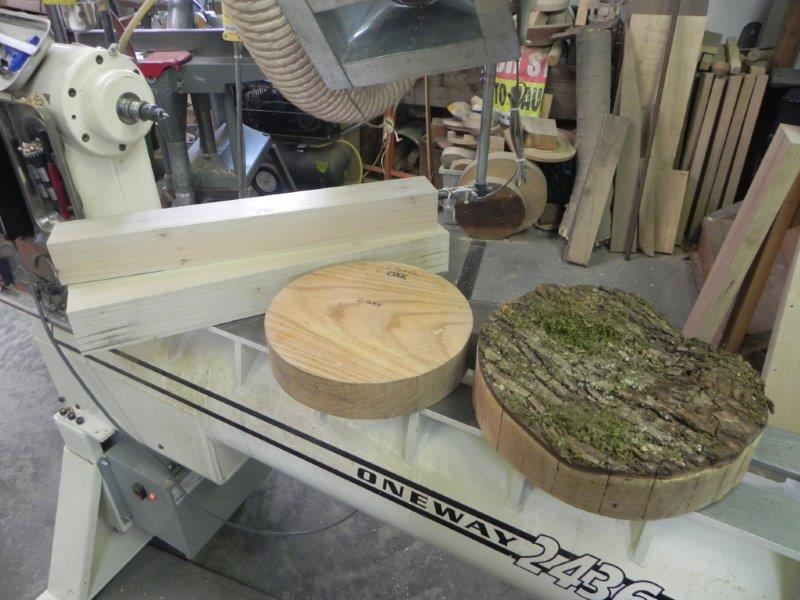
Milled spindle blanks, dried and milled bowl blank (both purchased) and a blank cut with a chainsaw in the back yard (free).
Safety
Safety may not be the first thing you look for in a blank, but it is the most important. Certainly dimension, species and cost might come first, but once you find your perfect blank is structurally unsound, you’ll have to start your hunt all over. Cracks are sometimes obvious, but sometimes not. Be thorough in your inspection before starting and while you are turning. If a crack is desirable from an artistic standpoint, weigh the benefit against the risk. Lynn Yamaguchi, one of the world’s most talented turning artists, has been sidelined by an intentional cracked blank that exploded. She’s lucky to be alive.

These cracks seem small but will penetrate deeply into the blank and will be present even after removing some material. They will extend past what appears to be the end of the crack.
Knots are always suspect, particularly if they are “loose” (a dead branch surrounded by bark). Large knots may be stable, but can make turning very difficult because of the change in density.
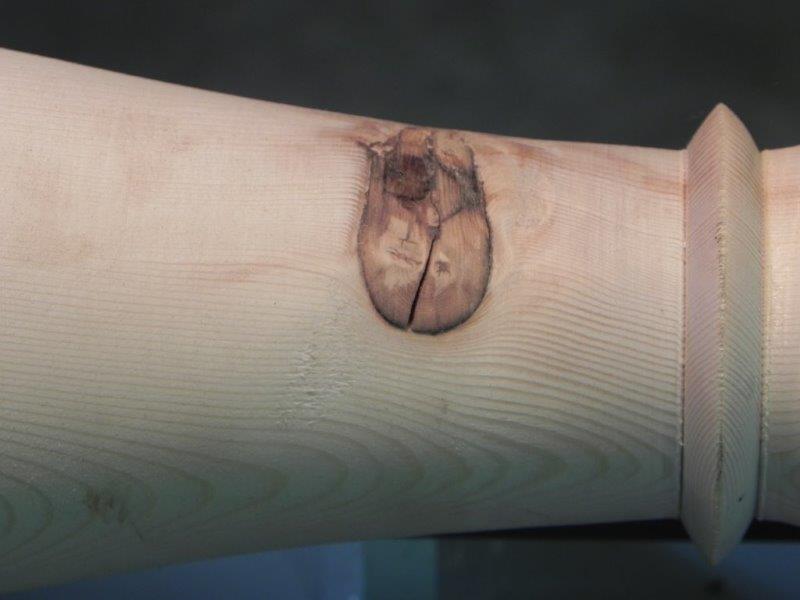
This is a classic loose knot. Note the dark line between the knot and clear wood. That is the bark around a dead branch engulfed by the growing tree. This knot did not show on the surface of the blank.
If there is bark on your blank, ensure that it won’t come off while turning. Bark is every bit as dangerous as solid wood when it flies off. The bark on winter-cut wood is the most stable, but the best solution is to take all the bark off every time before turning.
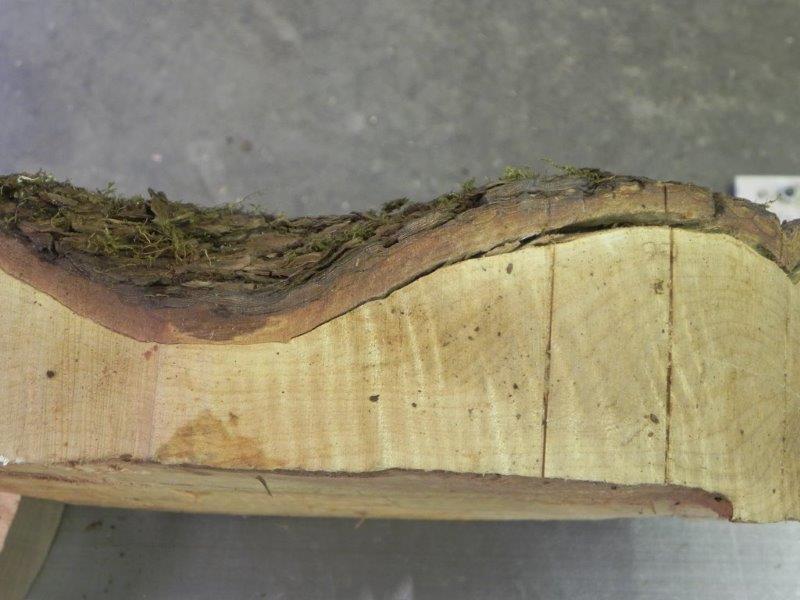
This bark is obviously loose and can be removed easily. Not all loose bark is this obvious.
Poorly balanced blanks can throw themselves right out of the lathe. Always start at the lowest speed and increase slowly. If you have step pulleys, “bump” the start button a few times until you are certain vibration won’t be a problem. If possible, bring the piece back into balance with counter weights or remove wood as required prior to turning.
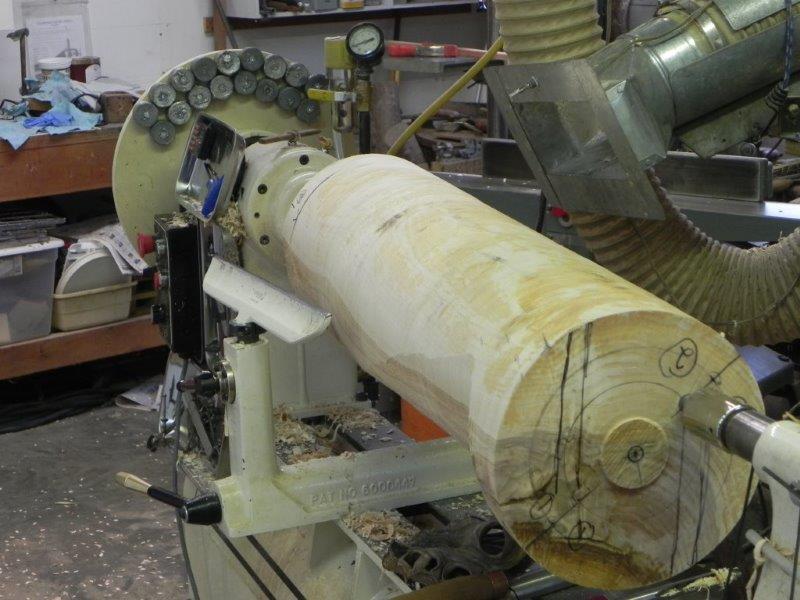
The piece above is intentionally off-balance for multi-axis turning. Using lead attached on the outboard end is one way of bringing a piece into balance, however, it is better to balance the piece by removing wood as required prior to turning.

Although this is a very large natural edge blank, the piece was in balance. Some of the wood was removed evenly prior to turning. The piece was harvested in the winter and the bark in this case is very secure. It is mounted very securely on a faceplate.
Grain direction is significant in spindle blanks. If the grain angles across the piece rather than parallel to the axis, it is possible the piece may break in the lathe or during its intended use.
Appearance
In a face-turned piece it is nice to have the grain centered, but you may have a reason to have it shifted to one side. Either way, this is a consideration when choosing your blank that shouldn’t be left to chance. The orientation of the growth rings in a flat-grained piece will greatly affect the final appearance, yielding either an hourglass shape or a series of ovals in the grain pattern in the bottom of the bowl or platter.
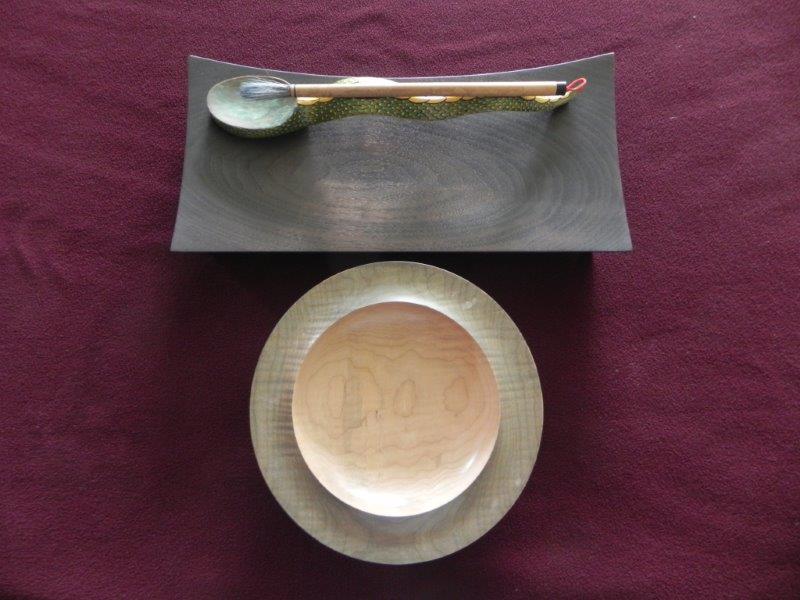
The grain in the piece at the top was intentionally shifted to the front to frame a turned stone ink well. The grain in the bottom piece was intentionally centered to visually balance the piece. Subtle, yet important considerations.
Figured grain adds excitement to a piece, but can be quite difficult to turn because it is often prone to tear out. If chosen for a spindle, the change in grain direction may be severe enough to cause the piece to break at the smaller diameters.
Spalted wood can have wonderful, exciting patterns but it can be a nightmare or even impossible to turn and finish due to the tear out. Spalt on the surface may seem sound, but often is complete punk a half inch under the surface.
Green or dry
Both green and dry wood have their advantages and disadvantages depending on your needs. Do you want a piece to stay round after turning? Do you want it to be warped? Do you have time to rough turn a piece then dry it before finish turning? Describing all the options is enough for a whole other post, so certainly is a major consideration when choosing your blank.
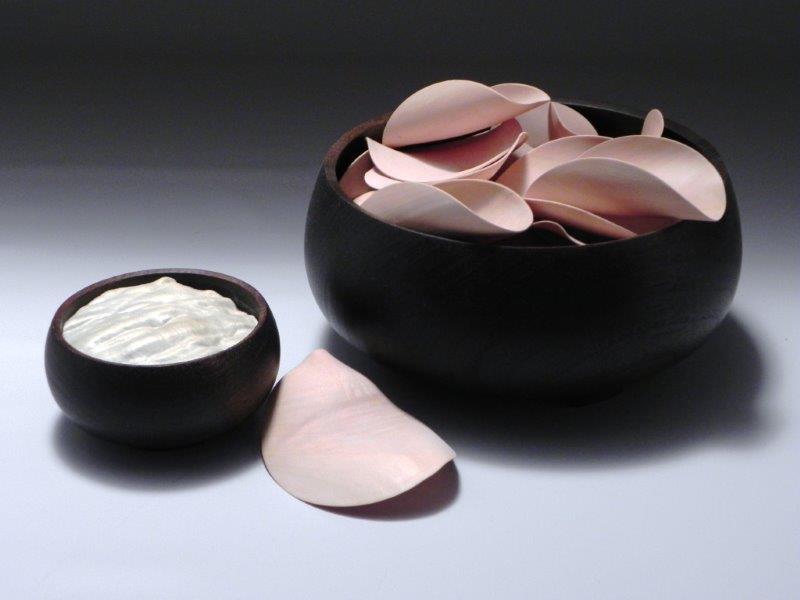
The qualities of green arbutus (madrone), dry black walnut and the natural edge of a quilted maple were used to create this illusion.
Cost
This may be the first or the last consideration, depending on your needs and point of view, and of course “expensive” is a relative term. The term “cost” should also apply to your safety and the effort that you put into the piece. Will you be safe while you are turning and will you be happy with the result in the end? What you paid for it – a lot or a little – may have little or no bearing on the outcome.
